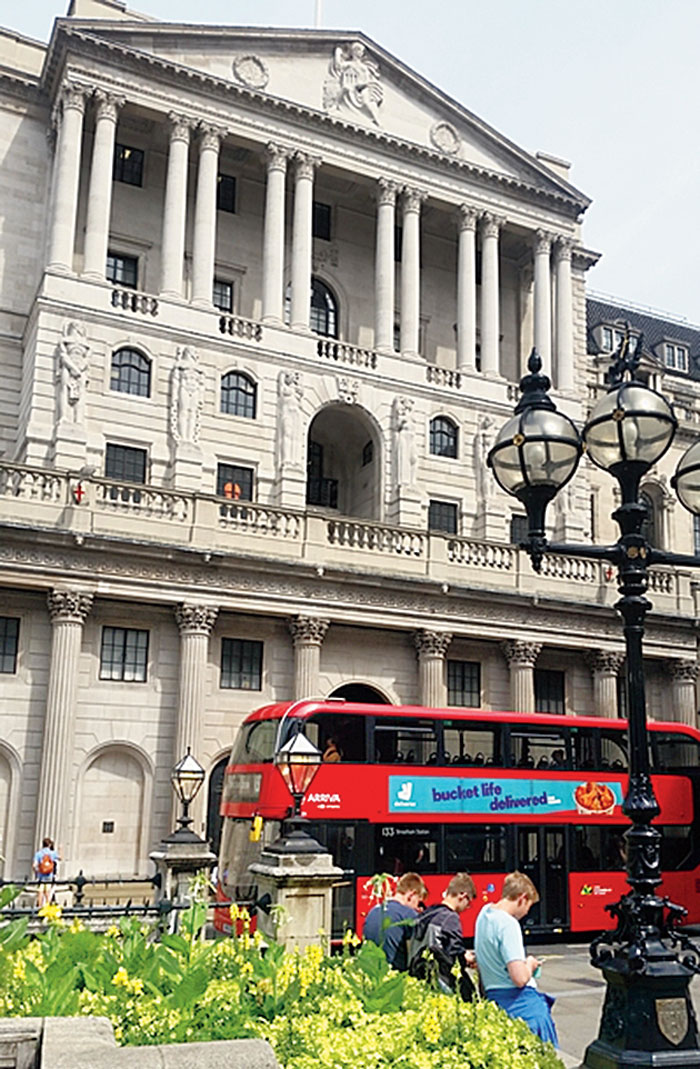Raghuram Rajan might want to pop into a new exhibition that has just opened at the Bank of England to celebrate its 325th anniversary as he has been tipped by the Financial Times as its next governor along with a handful of other candidates.
It’s true that the former governor of the Reserve Bank of India hasn’t applied for the job — “It’s obvious I’m an outsider and I have very little understanding of the deep ebbs and flows of politics in that country” — but as the Guardian noted, “perhaps he could be persuaded”.
By early 2020, the Bank of England will have a new governor to replace the Canadian Mark Carney. The appointment will be made by
Sajid Javid, who has taken over from Philip Hammond as chancellor of the exchequer.
Whoever wants to impress the interview panel might find it useful to do a tour of the exhibition and learn how the Bank of England was established in 1694, how it was nationalised in 1946 after all its private shareholders were bought out, and how Gordon Brown, as chancellor, made its decision-making independent of government in May 1997.
Ahead of its formal opening to the public, The Telegraph was given privileged access to the exhibition and given a guided tour by its two curators, who could answer such basic questions as: where did the expression “safe as the Bank of England” come from? And why is this hallowed institution still called “the Old Lady of Threadneedle Street”?
“Underneath our feet right now are the vaults of the Bank of England,” revealed Jenni Adam, curator of Bank of England Museum.
“We store a lot of gold for the UK government, also for other overseas governments and financial institutions and central banks. The bank provides custody services looking after gold in a very secure location.”
Visitors are not allowed to go down into the vaults. However, they can see “a recent photograph” of the vaults where everything that glitters really is gold — 400,000 bars, each weighing 13 kg, making 5.2 million kg in all.
The dominating façade of the front entrance in Threadneedle Street in the heart of the City of London looks burglar proof. All this explains the expression, “safe as the Bank of England”.
The depiction of the bank as “the Old Lady of Threadneedle Street” goes back to 1797 and the time of the French revolutionary wars.
“The bank suspended payments of gold coins for its bank notes because there was a fear that France was going to invade England and that the French armies would take over the Bank of England and secure the gold,” Adam explained.
That did not stop the government of William Pitt the younger from trying to borrow more gold from the bank for its war effort.
That gave rise to a famous cartoon in 1797 by James Gillray who drew the bank as an old lady in a dress made from notes.
The Prime Minister is shown puckering up to the elderly woman while his hand is reaching surreptitiously into her pocket for the gold.
“And that is where the nickname — the Old Lady of Threadneedle Street — comes from,” said Adam.
The Bank of England museum “has got about 50,000 objects”, its collections and exhibitions manager, Miranda Garrett, told The Telegraph. “We have picked 325 objects to represent 325 years since our foundation in 1694.
As an institution there are portraits of dead, white men. But those weren’t always the ones we used in this exhibition.
“We have tried to pull out the lesser known stories.”
One of the intriguing objects on display is “a radiation fallout calculator, from 1958, used to estimate the effects of a nuclear attack”.
Perhaps this gave Ian Fleming the idea of writing Goldfinger, in 1959, in which the villain, Auric Goldfinger, plots to increase the value of his own gold by detonating a dirty nuclear device inside the vaults of the US Bullion Depository at Fort Knox.
As a smiling Goldfinger confirms to James Bond, he does not want to steal America’s gold – he just wants to render it useless by contaminating it for 58 years. This was made into a film in 1964.
“Spanning art, design, archaeology, architecture, ceremony, politics, wartime, the monarchy, security, fraud and forgery, crises, riots and technology, the exhibition is an absorbing presentation of world and social history from a genuinely unique perspective,” proclaim the exhibition’s curators.
On display is a £10 note from 1850 stamped “forged” by the bank. In 1890 someone else tried unsuccessfully to pass it off as genuine by scraping off the word, “forged”.
There is a floral “sculpture”, made by artist Justine Smith especially for the exhibition, from discarded £50 notes.
The oldest items are Roman archaeological objects found in the 1920s because “this is a really rich part of the City of London in terms of archaeology and history”. Entry to the exhibition, which runs until 15 May 2020, is free.
Adam said: “We want to open our history and show people some of the stories from our past: how the bank has developed as an institution and become the United Kingdom’s central bank.
“The bank’s mission is still to work for the good of the people and to maintain monetary and financial stability in the United Kingdom.”











